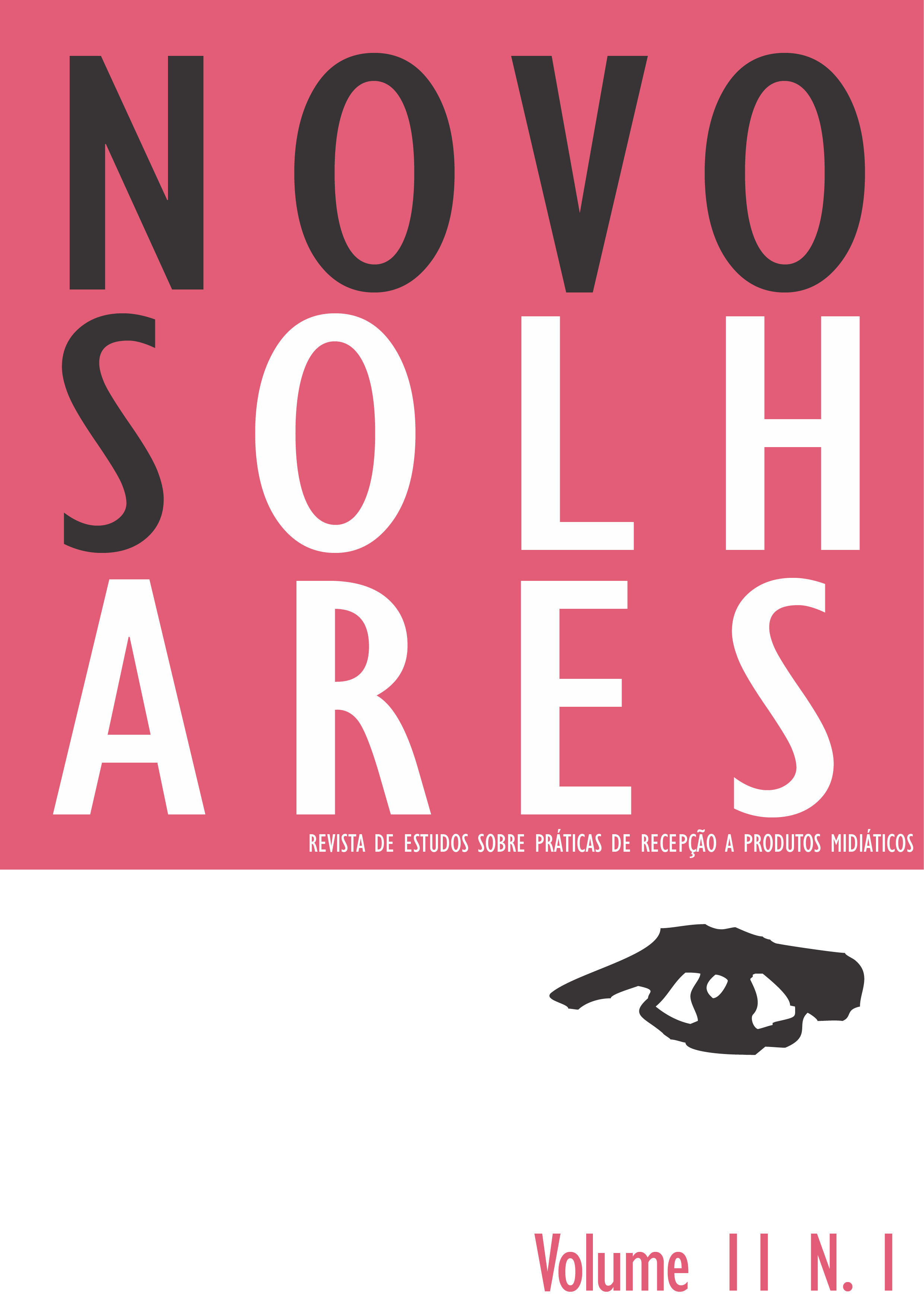Children’s television in Brazil and China: a historical approach beyond western models
DOI:
https://doi.org/10.11606/issn.2238-7714.no.2022.195455Keywords:
Television, Children’s programming, Brazil, ChinaAbstract
Although Brazil and China may seem very distant, several approximations can be made regarding the development of their television apparatus. The objective of this article is to investigate the development of children’s television in the two countries by a historical perspective that pays attention to non-Western models of reflection. For this, we carried out a bibliographic survey that helped us to solve the following question: what are the similarities and differences in the formation of children’s television in Brazil and China? The hypothesis is that the television formation of the two countries experienced similar processes at different moments of the development of their nation projects mediated by television. Whereas China remains with this national project in place, Brazil has suffered several ruptures due to political issues.
Downloads
References
Amorim, E. (2007). História da TV Brasileira. Centro Cultural de São Paulo.
Araujo, M. (2021). iQIYI e a televisão chinesa: uma reflexão sobre as plataformas de vídeo sob demanda para além do Ocidente. GEMInIS, 12(3), 151-168. https://doi.org/10.53450/2179-1465.RG.2021v12i3p151-168
Bai, R. (2007). TV dramas in China: Implications of globalization. In M. Kops & S. Ollig (Eds.), Internationalization of the Chinese TV sector (pp. 75-99). LIT Verlag.
Bai, R., & Song, G. (2015). Introduction. In R. Bai & G. Song (Eds.), Chinese television in the twenty-first century: Entertaining the nation (pp. 1-20). Routledge.
Bolaño, C. (2014). Globalization and history in Brazil: Communication, culture, and development policies at a crossroads. In M. Guerrero & M. Márquez-Ramírez (Orgs.), Media systems and communication policies in Latin America (pp. 226-242). Palgrave.
Bujes, M. I. E. (2005). Infância e poder: Breves sugestões para uma agenda de pesquisa. In M. I. E. Bujes & M. V. Costa (Orgs.), Caminhos investigativos III: Riscos e possibilidades de pesquisar nas fronteiras (pp. 179-197). DP&A.
Chua, B. H. (2012). The regionalization of television and China. Chinese Journal of Communication, 5(1), 16-13. https://doi.org/10.1080/17544750.2011.647739
Cordelian, W., Gaitan, J. A., & Gomez, G. O. (1996). A televisão e as crianças. Comunicação & Sociedade, (7), 45-55. https://doi.org/10.11606/issn.2316-9125.v0i7p45-55
Costa, A., & Amancio, A. C. (2015). Franquias televisivas: Processos de produção, venda e circulação. GEMInIS, 6(1), 154-173.
Cunha, G. L. (2017). As relações Brasil-China: Ciência, tecnologia e inovação no século XXI [Tese de doutorado, Universidade Federal do Rio de Janeiro]. Repositório institucional da UFRJ. https://bit.ly/3GQvSkH
Fiel, A. F. (2019). A tela encantada: Infância e conteúdo infantil na TV do Brasil [Dissertação de mestrado, Universidade Federal Fluminense]. Repositório institucional da UFF. https://bit.ly/3MNGFO3
Hall, S. (1992). The West and the rest. In S. Hall & B. Gieben (Eds.), Formations of modernity: Understanding modern societies an introduction book 1 (pp. 275-332). Polity Press.
Ishii, K. (2013). Nationalism and preferences for domestic and foreign animation programmes in China. International Communication Gazette, 75(2), 225-245. https://doi.org/10.1177/1748048512459148
Keane, M., & Zhang, J. (2017). Where are we going? Parent-child television reality programmes in China. Media, Culture & Society, 39(5), 631-643. https://doi.org/10.1177/0163443716663641
Keane, M., & Moran, A. (2003). Television across Asia: TV industries, programme formats and globalisation. Routledge.
Kuhlmann, M., Jr., & Fernandes, R. (2004). Sobre a história da infância. In L. Faria Filho (Org.), A infância e sua educação: Materiais, práticas e representações (pp. 15-33). Autêntica.
Li, M. (2003). As relações sino-brasileiras: Passado, presente e futuro. In E. S. Fujita (Org.), O Brasil e a Ásia no século XXI: Ao encontro de novos horizontes (pp. 69-86). Ipri.
Lima, H. S. (2015). A lei da TV Paga: Impactos no mercado audiovisual [Dissertação de mestrado, Universidade de São Paulo]. Biblioteca Digital de Teses e Dissertações da USP. https://bit.ly/3PYMv1O
Lou, S. (2017). Mídia, chinesidade e a vida sociocultural dos sinos-cariocas: História e perspectivas [Dissertação de mestrado, Universidade Federal do Rio de Janeiro]. Repositório institucional da UFRJ. https://bit.ly/3xf2Nwf
Magalhães, C. M. (2007). Os programas infantis da TV – Teoria e prática para entender televisão feita para as crianças. Autêntica.
Mattos, S. (2009). História da televisão brasileira: Uma visão econômica, social e política. Vozes.
Medeiros, S. M. G. (2008). Qualidade na televisão [Tese de doutorado, Pontifícia Universidade Católica de São Paulo]. Repositório PUC-SP. https://bit.ly/3ajXKl2
Nesteriuk, S. (2011). Dramaturgia de série de animação. ANIMATV.
Pesquisa brasileira de mídia 2016: Hábitos de consumo de mídia pela população brasileira. (2016). Secretaria Especial de Comunicação Social da Presidência da República. https://bit.ly/3xpKbsn
Pinheiro-Machado, R. (2013). China: Passado e presente. Artes e Ofícios.
Ricco, F., & Vannucci, J. A. (2017). Biografia da televisão brasileira. Matrix.
Thussu, D. K. (2006). Media on the move: Global flow and contra-flow. Routledge.
Waisbord, S. (2004). McTV: Understanding the global popularity of television formats. Television & New Media, 5(4). 359-383. https://doi.org/10.1177/1527476404268922
Wallerstein, I. (2013). O universalismo europeu: A retórica do poder. Boitempo.
Zhao, B. (2013). The little emperor’s new toys: A critical inquiry into children and television in China. Springer.
Zhu, Y. (2019). TV China: Control and expansion. In S. Shimpach (Ed.), The Routledge companion to global television (pp. 436-444). Routledge.
Downloads
Published
Issue
Section
License
Copyright (c) 2022 Mayara Araujo, Arthur Felipe Fiel

This work is licensed under a Creative Commons Attribution-NonCommercial-NoDerivatives 4.0 International License.
Proposta de Aviso de Direito Autoral Creative Commons
1. Proposta de Política para Periódicos de Acesso Livre
Autores que publicam nesta revista concordam com os seguintes termos:
- Autores mantém os direitos autorais e concedem à revista o direito de primeira publicação, com o trabalho simultaneamente licenciado sob a Licença Creative Commons Attribution CC Attribution-NonCommercial-NoDerivatives 4.0, que permite o compartilhamento do trabalho com reconhecimento da autoria e publicação inicial nesta revista.
- Autores têm autorização para assumir contratos adicionais separadamente, para distribuição não-exclusiva da versão do trabalho publicada nesta revista (ex.: publicar em repositório institucional ou como capítulo de livro), com reconhecimento de autoria e publicação inicial nesta revista.
- Autores têm permissão e são estimulados a publicar e distribuir seu trabalho online (ex.: em repositórios institucionais ou na sua página pessoal) a qualquer ponto antes ou durante o processo editorial, já que isso pode gerar alterações produtivas, bem como aumentar o impacto e a citação do trabalho publicado.



